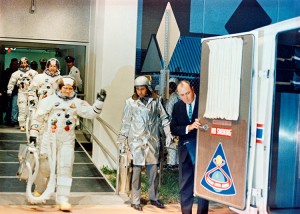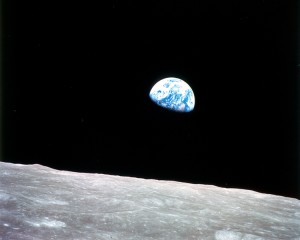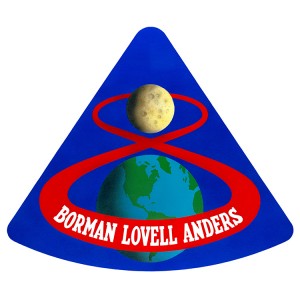Apollo 8
Wednesday, December 26th, 2018December 26, 2018
On Dec. 26, 1968, 50 years ago today, United States astronauts of the Apollo 8 mission prepared to reenter Earth’s atmosphere after becoming the first humans to orbit the moon. Apollo 8 was part of the Apollo space program that eventually landed people on the moon. The program lasted from 1961 to 1975. It was conducted by the National Aeronautics and Space Administration (NASA). Live telecasts by the Apollo 8 astronauts were shown around the world, including a famous Christmas Eve broadcast that, at that time, was the most watched television program in history.

The Apollo 8 crew–astronauts Frank Borman, James A. Lovell Jr., and William A. Anders–prepare to board a van which will transfer them to the launch pad at Florida’s Kennedy Space Center on Dec. 21, 1968. The crew orbited the moon and returned safely to Earth on December 27. Credit: JSC/NASA
Apollo 8 launched on Dec. 21, 1968, with astronauts William Anders, Frank Borman, and James Lovell, Jr. It was the second piloted Apollo mission, following Apollo 7 that had tested equipment in low orbit two months earlier. After separating from the carrying Saturn V rocket, the Apollo 8 astronauts guided the command and service module, or CSM, through trans-lunar injection, a maneuver sending the spacecraft toward the moon. The CSM entered lunar orbit and then passed to the dark side of the moon. People on Earth held their breath as communications were lost—as expected—for several minutes. Contact then resumed and was lost and resumed again as the CSM orbited the moon 10 times over 20 hours.

Apollo 8 astronaut William Anders took this famous photograph–known as Earthrise–on Christmas Eve, Dec. 24, 1968. The lunar surface can be seen in the foreground. Credit: NASA
The NASA telecasts took place just before, during, and after these orbits, and the astronauts took a series of remarkable photographs—including the famous “Earthrise” and other photos that showed humans what our planet looks like from space. On December 27, Apollo 8 returned to Earth, splashing down in the Pacific Ocean near the recovery ship Yorktown, 147 hours after launch and precisely on time.

This official emblem of the Apollo 8 lunar orbit mission featured the names of the crew: Frank Borman, commander; James A. Lovell, Jr., command module pilot; and William A. Anders, lunar module pilot. Credit: NASA
Apollo 9 and 10 carried out further tests before Apollo 11 landed humans on the moon for the first time in July 1969. Five more Apollo missions landed astronauts safely on the moon through December 1972.


